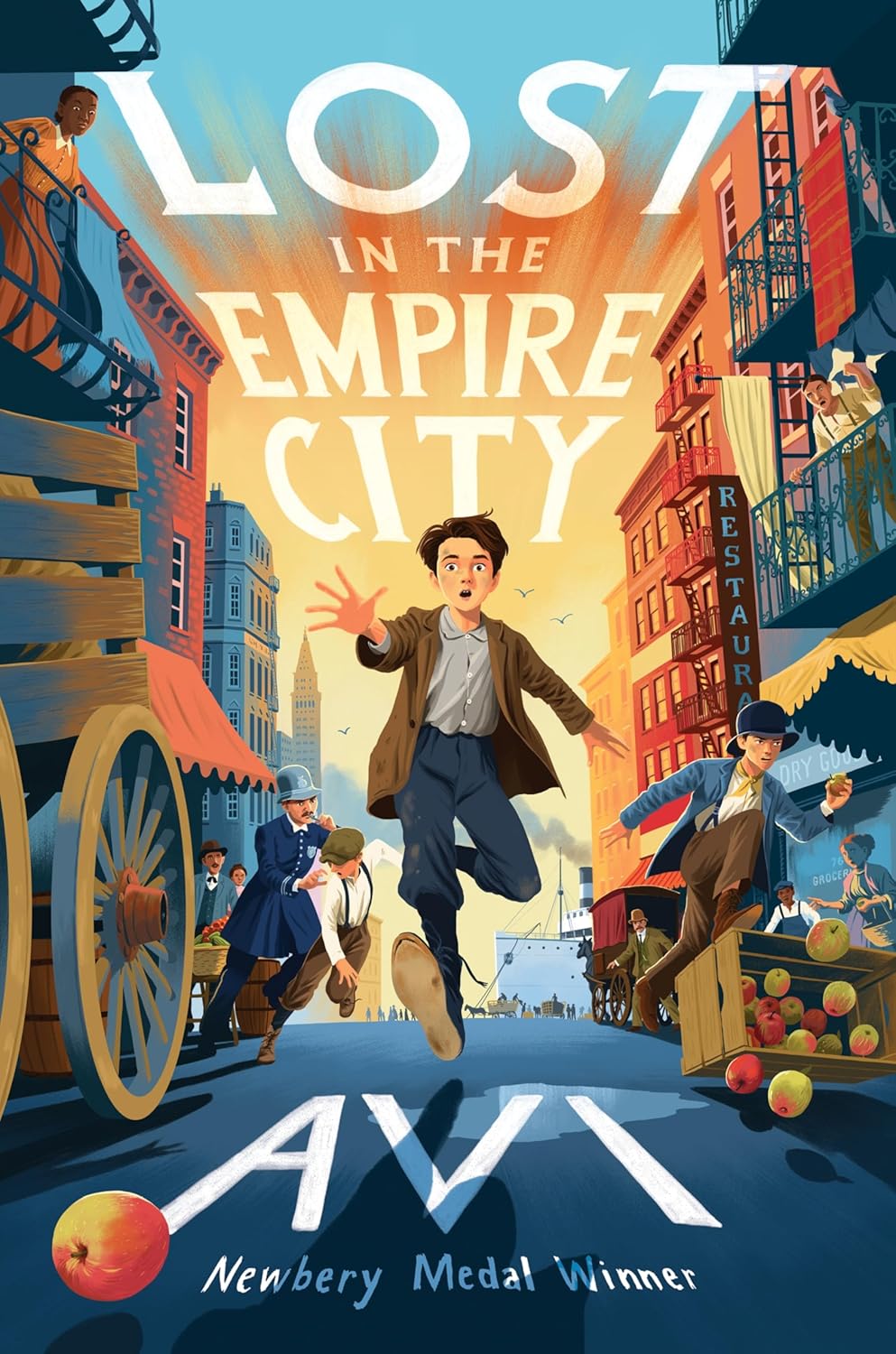Author: Avi
Reading Level: Middle Grades (age 10 and up)
Santo lives in a small village in Italy. Because his family is desperately poor, his father moves to America to make enough money to send for the family to join him. Before he leaves, he makes Santo promise to take care of the family. As time passes, Santo begins to wonder if his father will ever send for them or if he has been lost. When father finally contacts the family with money for steamship tickets Santo’s life seems to be taking a turn for the better. However, when the family arrives on Ellis Island, Santo is separated from his mother and siblings. He knows his mother has been ill on the ship and worries that she may be sent back to Italy. Santo is forced onto a ferry from the Island to New York city and tries in vain to find his father. Knowing only a few words of English, Santo is forced to accept the reality of being separated from his family and completely alone in a strange, incomprehensibly vast city. He knows his mother has warned him often that he must not resort to stealing but when he is recruited into a criminal gang, he seems to have no options.
This story has many twists and turns that will keep readers anxiously turning the page to see what happens next. As the story progresses, Santo struggles with some ethical dilemmas – namely, stealing. Is it OK to steal to eat? What if you are forced? What if you are good at it and on some levels even enjoy the challenge? How can one young boy fight corruption and find a way to escape a gang?
“Lost in the Empire City” is an engrossing historical fiction set in New York City in the early 1900s. Although the story is fiction, some of the characters are real, including the corrupt police officer that runs the gangs. Readers will also see the harsh side of immigration in this time period for the people who counted on America being the land of riches. The story hits many aspects of entering a new country – language barriers, meeting unkind people, lost loved ones, and more. You can really feel Santo’s confusion in the midst of New York City, encountering criminals and other hardships while trying to survive.
Is the book well written? Yes, Avi is a master story teller and this book moves along quickly and has plenty of plot twists to keep the reader interested.
Are the characters well developed, realistic, and relatable? Yes, Santo struggles with who he is, who he wants to be, and what is the right way to live his life. His emotions and struggles are very realistic and written in a way that a middle school reader will easily relate to. He recognizes that what he is doing is wrong and struggles to find a way out, even while admitting to himself that he must remind himself that stealing is wrong because he could easily learn to enjoy it.
Does this story present positive role models? There are some positive role models but many of the adult characters in the book are corrupt. Santo’s mother teaches him right from wrong, he eventually finds a way to leave the life of crime, he forms true friendships even in harsh circumstances.
Does this book include language or lifestyles in conflict with the teachings of Scripture? There were no language issues noted. The lifestyle of gang membership and thievery are obviously contrary to Biblical teaching but in the end Santo makes choices that lead to him finding a way out of that life. Readers will be able to empathize with his struggles without being drawn to his sinful choices. Evil is shown to be harsh and undesirable while family and home are shown to be good and worthy of working for.
Is violence and gore a part of the story? The life of a poor immigrant in 1900 was harsh and at times violent. This is portrayed realistically in the story. Santo is bullied by other gang members, he is struck by an adult, adults threaten harm to the boys in the gang. All of these circumstances are written in age appropriate detail for middle school readers without gratuitous details or gore. This content may be distressing to sensitive or younger readers.





